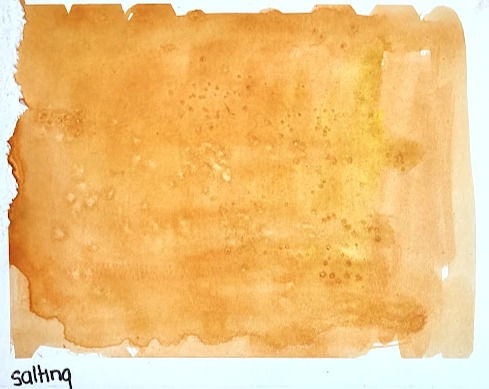Very simple watercolor techniques for kids and adults
- Yulia Balobanova
- Feb 20, 2022
- 3 min read

Hello fellow artists!
It’s Brynn here and today I will be showing you how to create eight different watercolour techniques.
Watercolour is a very fun media to play with, as the medium has a unique movement and has the ability to create wonderful textures.
Painting with watercolour has many advantages:
Easy clean-up
It is practically impossible to damage your brushes with watercolour paints. Even if you forget to wash them, it is not that big of a deal. Before you start painting the next time you could just rinse them out. There is no need to worry about the thought of dried paint hardening and ruining your brush. Also, if you get paint on your furniture, skin or clothes, it is easy to clean up with water, which makes watercolour very kid friendly.
Less wasted paint
This advantage also makes watercolours extremely versatile. A single pan or tube of watercolour paint can give you various shades of the same colour simply by adding less or more water. You can mix colours on the paper by layering one colour over another or build colours to add richness.
Relatively inexpensive
In terms of the paints, student grade watercolours can give excellent and amazing results when you are just beginning. This makes it the really low risk to experiment while you are still a learner with this you will be able to try out lots of new ideas without wasting a lot of money. Later, you can buy more expensive artist grade paints as you get more advanced.
There are eight watercolour techniques I will be going over for you to play around with at home.
1.Scratch off
Involves scratching the paper to create small indentations. Start by painting a wash where you’d like the scratch texture to go. While still wet, take a sharp object and drag it across the paper. Paint will fill the punctured surface and appear darker and more defined than the rest of your wash.

2. Wet-on-wet
The wet-on-wet approach showcases the best quality of watercolour paint, its ability to create beautiful ethereal washes. To produce this technique, simply wet part of the paper with your brush. (You can use either water or a little pigment.) Then, dip your brush into another colour and lightly dot it on the wet area and watch as the pigment feathers.

3.Gradient
Start by loading the paintbrush with lots of colour before painting one side of the canvas. Next time you dip your brush in the paint, use a little less colour and move over a little on the canvas. Each time you paint, you will use a little less colour, so that it looks as though the colour is fading as you go across the page.

4.Lifting
Using a paper towel or a tissue that has a quilted design, crumple the paper in your hand and gently press down on the wet paint. Even if the pattern of the paper does not appear on the surface, the folds will create interesting impressions that you can manipulate by simply adjusting your hold on the tissue.

5. Oil pastel resist
Draw over your blank page with any designs of your choosing, then wash over your designs with watercolour. Watch as the oil from the pastel and water base from the watercolour do not mix, which makes for a visually appealing and textured product.

6. Splattering
Fill the bristles of a toothbrush or a stiff-bristled brush with pigment. Hold it at a downward angle, so the bristles are pointed toward the ground. With your opposite hand, run your fingers along the edge of the brush. Go slowly and pull the bristles back so they launch paint onto the canvas. This technique is perfect for small snow detailing, abstraction or sparkles.

7.Drybrush
When painting with a dry brush, you will create an interesting scratchy texture on the page. Make sure your paint is not too wet and dab some of the excess on a paper towel for the best effect. This is another fun technique for beginners to experiment with.

8.Salting
Adding a little salt to your wet paint creates texture by soaking up some of the surrounding pigments. When you are a little more confident in your painting ability, you can practice using different sized salt grains.

Have a wonderful time playing around with this media and don’t forget to send in what you created to Yulia and I via social media - Instagram or Facebook!
If you are interested in watching me bring these techniques to life, check out the link provided below to my YouTube video!





Comments